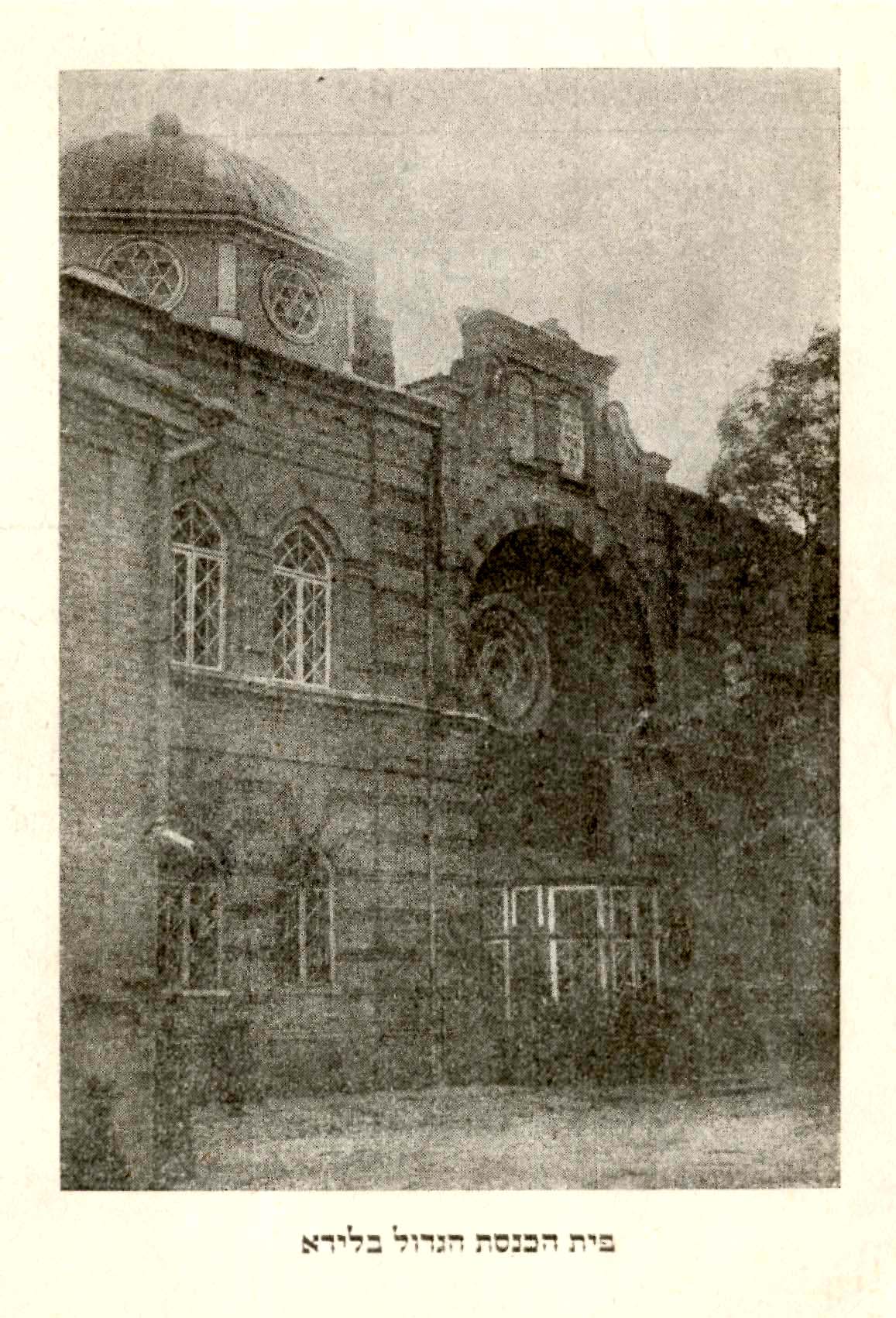

Lida

One of the first proto-Zionist circles of Hovevei-Zion (Palestinophiles) operated in Lida in the 1880s. In 1886-1915, the town was the home of Rabbi Yitzchak Yaacov (Isaac Jacob) Reines, founder of the Mizrachi religious Zionist movement; Lida can be regarded as the birthplace of Mizrachi.
On the night of Passover in April 1919, during the Polish-Soviet War of 1919-1920, Polish troops entered Lida and staged a pogrom, which claimed the lives of 39 local Jews.
In 1921, Lida was incorporated into the newly established Polish Republic. In 1931, the town was home to 6,335 Jews, who made up about 31.7 percent of its total population.
In the early 1920s, the local Jewish community underwent an economic recovery. Lida now had many industrial enterprises, from flour mills to metal workshops (including the second-largest galoshes factory in Poland), most of them owned by Jews. Numerous Zionist parties and youth movements – Hehalutz, Hashomer Hatzair, Mizrachi, the leftist and rightist factions of Poalei Zion, and others – were active in Lida in the interwar period. Cultural life, in both Hebrew and Yiddish, flourished.
With the beginning of World War II in September 1939, Lida was occupied by the Soviets. Because of the influx of refugees from the German occupation zone in Poland, the local Jewish population rose to about 8,500 people. Zionist activity was banned, and the majority of parties and groups were disbanded, with some of them (Hanoar Hazioni, the rightist Beitar) going underground.
On June 22, 1941, the Soviet-German War broke out. June 25 saw the beginning of heavy fighting over Lida; the town was bombed and shelled, and many of its residents were killed in the course of the battle. By June 28, Lida was fully controlled by the Wehrmacht.
Following on the heels of the German Army, Einsatzkommando 9 entered the town. On July 3, the SS rounded up the local Jewish intelligentsia and members of the liberal professions. According to various sources, they selected either 92 or 96 Jews, took them out of the town to the area of the village of Nowoprudce (now a southeastern suburb of Lida), and, after subjecting them to humiliation and torture, shot them in an abandoned Soviet ammunition depot, 2 km from the town center.
At the same time, a Jewish Council (Judenrat) was appointed in Lida. Anti-Jewish decrees followed. Jews were required to wear an identification mark on their clothes. Initially, the mark was a yellow circle; in August, it was changed to a yellow Star of David.
In September 1941, a ghetto was established in Lida. It consisted of three separate, unconnected Jewish quarters, which were named after the districts where they were located: the main Postawska Ghetto (along Postawska Street, on the eastern edge of the town), which included the Jewish cemetery; Koszarowa (on present-day Chyrvonaarmeiskaia Street), and Piaski at the western edge. Toward the end of 1941, the Jews of nearby Bielica were moved to the Lida Ghetto. A number of Jews from Vilna, who regarded Lida as "safer" than their own city, also found refuge there. However, the town proved to be unsafe: In March 1942, 35 refugees from Vilna were shot in the area of the town prison, in the western section of Lida.
On the evening of May 7, 1942, the ghetto was sealed. The Jewish council was ordered to submit a list of the able-bodied Jews, together with their occupations. On the same day, local villagers dug three trenches. On the next morning, May 8, the Germans rounded up the population of all three ghetto quarters. The Jews who resisted, as well as the elderly and sick individuals, were killed on the spot; thus, the three quarters of the ghetto – Postawska, Koszarowa, and Piaski – turned into de facto killing sites. The Germans selected about 1,000 specialists and their families. The rest of the Jews, 5,670 in number, were killed on the same day at a site west of the military barracks on Koszarowa Street; the children were killed separately from the adults.
All told, about 1,500-2,000 Jews remained in the Lida Ghetto. The last surviving Jews from Szczuczyn, Woronów (Werenowo), Raduń, Iwje, and some other settlements were moved into this ghetto. In March 1943, approximately 2,000 Jews from the Lida Ghetto were shot at Borki, in the area of the former shooting range at the northwestern edge of the town. In summer 1943, the Lida Ghetto housed about 4,000 Jews, most of whom had been brought to Lida from elsewhere.
The Nazis liquidated the ghetto in September 1943, and its last inmates were deported to the Majdanek death camp.
Lida was liberated by the Red Army on July 9, 1944.



